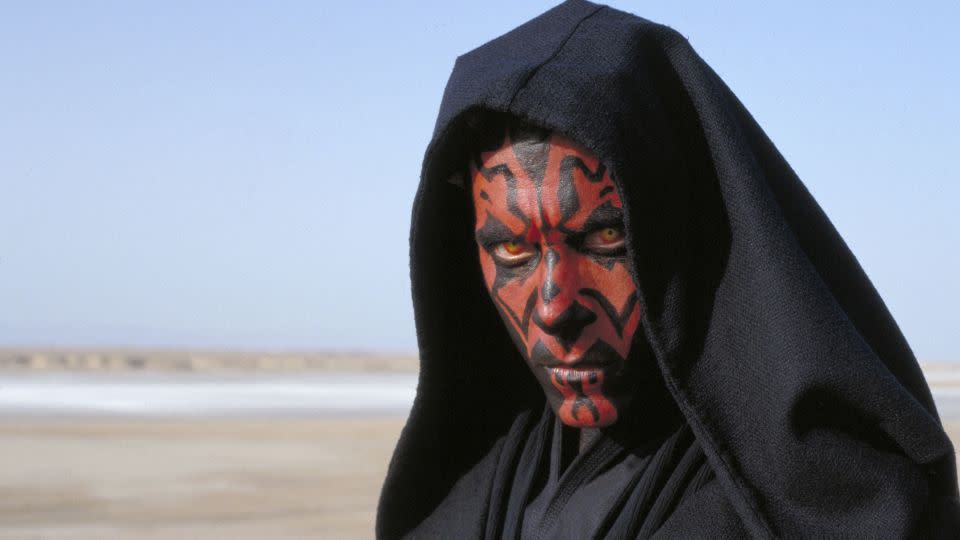As ‘The Phantom Menace’ turns 25, six (non-Jar Jar) things the ‘Star Wars’ prequel got right
- Oops!Something went wrong.Please try again later.
- Oops!Something went wrong.Please try again later.
- Oops!Something went wrong.Please try again later.
- Oops!Something went wrong.Please try again later.
The teeth-gnashing aspects of “Star Wars: The Phantom Menace” have been chewed upon for a quarter century, from Watto to Anakin Skywalker’s Midi-chlorian count (and miracle birth) to almost everyone’s favorite punching bag, Jar Jar Binks.
Yet as the movie that kicked off George Lucas’ prequel trilogy hits theaters to commemorate its 25th anniversary for the de facto “Star Wars” holiday May the Fourth, let’s accentuate the positive by identifying a half-dozen things the film, and the franchise’s patriarch, got decidedly right.
Each of these elements have echoed through “Star Wars” lore, and in most instances been put to better use elsewhere (in sequels, the various animated series overseen by Dave Filoni and the recent live-action ones, like “The Mandalorian” and “Obi-Wan Kenobi”) than they were in the original film.
Think of them as creative building blocks, which overcame clunkier parts of the script and awkward performances to influence the rest of the “Star Wars” timeline. They’re presented here in ascending order of significance:
6. The Emperor’s long game. The idea that Palpatine/Darth Sidious (played by Ian McDiarmid) would spend years undermining the Republic from the inside got a bit wonky, but it created a fertile backdrop for how the Sith could outmaneuver the Jedi.
5. The digital effects. Admittedly, this was a bit of a mixed bag, since Lucas’ emphasis on the visual components seemed to come at the expense of paying attention to the acting and performances, and in ways to overwhelm them. Yet he credibly moved the bar forward in terms of digital effects and design, which paid off in the scale of the action sequences.
4. Mace Windu. Samuel L. Jackson didn’t have much to do in this first movie, but the Jedi master became a vital part of the mythology and had opportunities to demonstrate his power later (perhaps foremost in the animated “The Clone Wars”), while padding the actor’s formidable resume when it comes to appearing in blockbuster franchises.

3. Darth Maul. As played by Ray Park, the mostly silent Sith apprentice represents one of the most visually striking characters introduced over the course of the entire series – including that way-cool double-sided lightsaber – so much so that Filoni went to great lengths to revive him after what certainly appeared to be a glass-half-empty exit at the end of “Phantom Menace.”
2. Casting Ewan McGregor and Liam Neeson. Although Lucas tilted the plot toward Darth Vader’s origin story, finding the young Obi-Wan Kenobi was a major challenge, and McGregor gave the first trilogy dramatic ballast even in its weaker moments, as did Neeson as his master. Those qualities were underscored by their brief reunion in the recent Disney+ series.
1. The lightsaber duels. In the original trilogy, lightsaber duels were essentially just basic sword fights, with a few acrobatic maneuvers and uses of telekinesis. The battle between Darth Maul and Qui-Gon Jinn and Obi-Wan – set to composer John Williams’ evocative “Duel of the Fates,” one of his finest musical contributions in a long line of them – lifted that to dazzling heights, not only in the use of “Force” abilities as an organic form of fighting but through the choreography and physicality. (Give much credit for the latter to Park, who put his experience as a martial artist and stunt double to excellent use.)
Every lightsaber fight since then – including the memorable image of Yoda energetically leaping around in “Attack of the Clones” and “Revenge of the Sith” – has built upon the framework that sequence established.
It’s also likely a key reason why “Star Wars” has continued to flourish as parents pass it on to their kids. Not everything in “The Phantom Menace” aged well, but that climactic duel is one of those scenes that can be watched and enjoyed over and over again.
“Star Wars: The Phantom Menace” will play in select theaters beginning May 3.
For more CNN news and newsletters create an account at CNN.com

